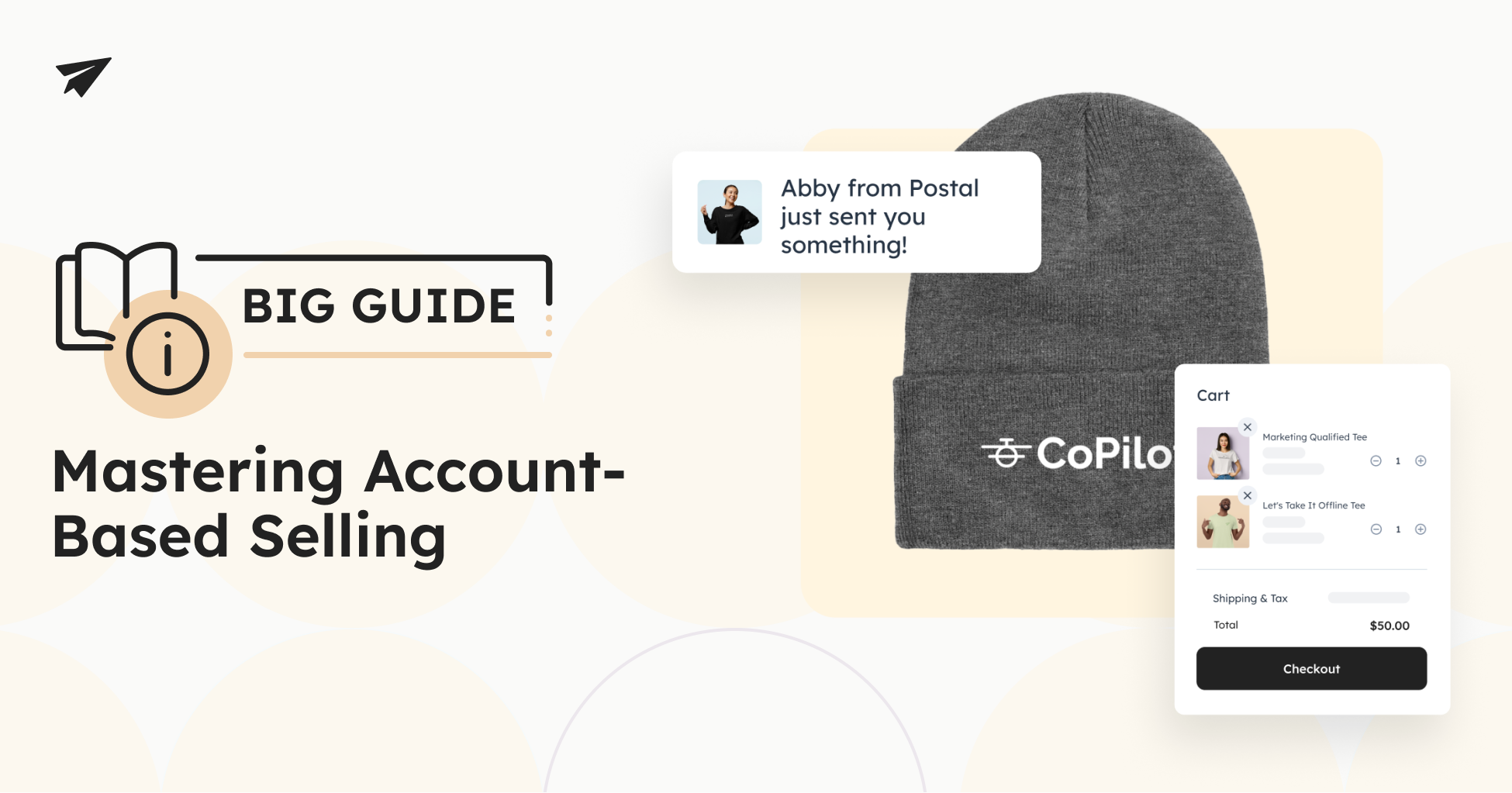
Lauren Alt-Kishpaugh
VP of Marketing

Explore the transformative power of account-based selling (ABS), a strategy that’s reshaping the way companies connect with their most valuable customers. By focusing on high-value accounts with personalized and highly targeted marketing and sales efforts, ABS enables businesses to craft messages that deeply resonate with the specific needs and key decision-makers of each account.
Read on and discover the potential of ABS to revolutionize your sales approach, promoting a unified team strategy that builds enduring partnerships.
Account-based selling is a strategic approach that treats individual accounts as markets in their own right. This method involves the sales team working closely with marketing teams to target prospects, focusing on high-value accounts that fit their ideal customer profile (ICP). It emphasizes personalized outreach and messaging tailored to the specific needs and pain points of stakeholders and decision-makers within these accounts.
{{cta}}
By leveraging tools like CRM, social media (notably LinkedIn), and account-based marketing (ABM) techniques, ABS aims to increase engagement and conversion rates, shorten the sales cycle, and enhance customer lifetime value. The strategy relies on certain metrics, including average deal size, win rates, and customer acquisition cost (CAC), to optimize sales processes and improve retention. ABS integrates sales development, account management, and customer success efforts to ensure a cohesive sales approach, enhancing the potential for upsell and cross-sell opportunities while reducing churn.

The account-based selling model tailors sales and marketing efforts to meet the unique needs of high-value target companies, focusing on personalized strategies for effective engagement and conversion.
The ICP is a detailed description of companies most likely to benefit from and purchase your product or service. It involves analyzing characteristics such as industry, size, revenue, and challenges to focus sales efforts where they’re most likely to succeed.
This element involves creating a curated list of companies that match the ICP. It's a targeted approach to sales, prioritizing resources and efforts on accounts with the highest potential for conversion and revenue growth.
Personalized outreach is critical in ABS, involving customized communication strategies that speak directly to the target account's specific needs, challenges, and opportunities, using platforms like LinkedIn and email for direct engagement.
Aligning sales, marketing, and customer success teams ensures a unified approach to target accounts. This alignment is vital for delivering consistent messaging and leveraging insights across teams to improve engagement and conversion rates.
Using CRM tools to monitor interactions and engagement with target accounts helps refine strategies and understand what works and what doesn’t. This data-driven approach informs future outreach and enhances account relationships.
Developing tailored content, such as case studies and industry reports, addresses the interests and challenges of target accounts. This content supports the sales process by demonstrating understanding and offering value.
ABM tactics support personalized marketing efforts, targeting specific accounts with customized campaigns. This integration enhances the overall ABS strategy by ensuring marketing activities are closely aligned with sales objectives.
Defining clear metrics and KPIs, such as deal size, conversion rates, and customer acquisition costs, is essential for measuring the effectiveness of the ABS strategy. These indicators help optimize future efforts for better outcomes.
Pinpointing the right accounts to target is perhaps the most important part of a successful ABS campaign, and figuring out which criteria to screen for is an essential first step. Here’s what to look for:
The size of the target account is crucial. Larger organizations often have complex decision-making processes and multiple stakeholders, making them ideal candidates for an ABS approach due to the potential for higher contract values and strategic partnerships.
Account value is determined not just by immediate sales potential but also by the lifetime value, strategic importance, and potential for upsell or cross-sell opportunities. High-value accounts are prioritized to maximize ROI on sales efforts.
Successful ABS requires a commitment of resources—time, team members, and tools. Sales reps need access to account intelligence, marketing support for personalized campaigns, and automation tools to manage and scale their outreach efficiently.

Effectively implementing ABS requires aligning sales and marketing strategies towards high-value B2B clients, focusing on personalized and strategic outreach. Here are the steps required to do so:
In account-based selling, content plays a pivotal role in engaging and converting high-value B2B accounts. By tailoring content to the specific needs and interests of target accounts, you can drive more meaningful interactions and accelerate the sales process.
Creating an ideal customer profile is crucial for targeting your marketing and sales efforts more effectively. It involves understanding the characteristics of companies that benefit most from your solutions.
Creating a buyer persona is a fundamental step in understanding your audience and tailoring your marketing and sales strategies to meet their specific needs and preferences. Here are the required steps:
Organizing a sales team for account-based selling involves defining roles that align closely with the strategy's needs, ensuring personalized and efficient outreach to high-value accounts. These are some of the roles you should consider:

Tracking the right KPIs is essential in ABS for measuring success and optimizing strategies. Here are some crucial KPIs that will ensure your ABS efforts stay on the right track:
Elevating your account-based selling performance is seamless with Postal. Our platform enhances engagement with key accounts through personalized outreach, including targeted gifting and direct mail, tailored to your ABS strategy. With Postal, you can effortlessly integrate with existing CRM and marketing tools, ensuring a cohesive approach to account targeting. Our analytics provide deep insights into engagement rates and campaign effectiveness, enabling data-driven decisions to refine your strategy.
Postal's solution empowers sales and marketing teams to boost conversion rates, strengthen relationships with high-value accounts, and achieve superior sales outcomes with strategic precision and personalization.
